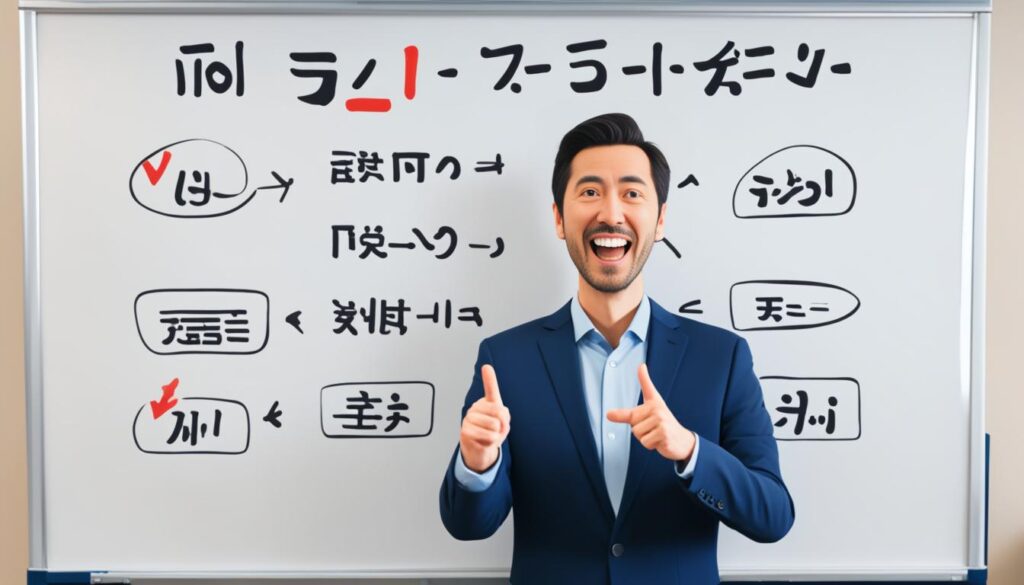
Are you interested in learning how to say “but” in Japanese? Being able to express contrasting ideas or concessions is an essential skill to enhance your Japanese conversations. In this article, we will explore the various ways to say “but” in Japanese, focusing on the word でも (demo) and its usage in different contexts. By the end of this article, you’ll have a better understanding of how to use でも effectively and add depth to your Japanese language skills.
How to Use でも to Contrast Ideas
でも (demo) is a versatile conjunctive particle in Japanese that is commonly used to contrast two ideas or concepts in a sentence. It serves a similar function to the English word “but” and helps express different shades of meaning. By using でも, you can add depth and nuance to your Japanese conversations.
Let’s look at some examples:
| English | Japanese |
|---|---|
| I can speak Japanese, but I cannot write Japanese. | 日本語は話せますが、書けません。 |
| I like Japanese, but kanji is difficult. | 日本語が好きですが、漢字は難しいです。 |
As seen in the examples above, でも is used to contrast the statements and highlight the differences between them. By utilizing でも, you can effectively convey contrasting ideas and enhance your communication skills in Japanese.
In the next section, we will explore how to use でも to express concession in Japanese sentences. Stay tuned for more valuable insights into this essential grammar point.
Using でも to Express Concession
でも can also be used to express concession in Japanese sentences. It allows you to acknowledge or admit a contrasting situation or condition, while still presenting your main point. For example, you can say “I am busy today, but I will make time for you” or “I think I am good at Japanese, but I still need to study.” By using でも to express concession, you can show understanding and flexibility while maintaining your main point or opinion.
Here are some examples of でも in concessive sentences:
| Japanese Sentence | English Translation |
|---|---|
| 忙しいですが、手伝います。 | I am busy, but I will help. |
| 日本語は得意だと思いますが、まだ勉強が必要です。 | I think I am good at Japanese, but I still need to study. |
| 難しいですが、がんばります。 | It is difficult, but I will do my best. |
By using でも to express concession, you can navigate contrasting situations with grace and communicate your thoughts effectively in Japanese conversations.
Starting a Sentence with でも

One of the unique features of でも is that it can be used at the beginning of a sentence in Japanese. In English, we typically start a sentence with “but,” but this is not possible. However, in Japanese, you can begin a sentence with でも to indicate a contrast or continuation of a previous idea. For example, you can say “But my Japanese is not so good” or “But it was closed.” By starting a sentence with でも, you can effectively convey your intended meaning and create more dynamic and nuanced conversations in Japanese.
Formal Alternatives to でも
While でも is commonly used in everyday conversation, there are formal alternatives that can be used in more professional or written settings. One such alternative is しかし (shikashi), which serves the same function as でも but is more appropriate for formal writing. Another alternative is けれども (keredomo), a longer version of the more casual けど (kedo). These alternatives can be used interchangeably with でも, depending on the formality of the situation and the style of communication desired.
Using these formal alternatives can help you communicate more effectively in professional or written contexts. While でも is suitable for casual conversations, incorporating words like しかし or けれども adds a touch of formality and sophistication to your Japanese language usage. Whether you’re writing a business email or preparing a formal presentation, these alternatives will help you convey your thoughts with precision and respect.
Using が, けど, and だけど as But
In addition to でも, there are other conjunctions that can be used to express “but” in Japanese. These include が (ga), けど (kedo), and だけど (dakedo).
が is typically placed at the end of a sentence and is used to connect two thoughts together. It is commonly used to present a contrasting or unexpected situation. For example:
- I like sushi, but I don’t like fish that much. (寿司は好きですが、魚はあまり好きではありません。)
- She is smart, but she is not confident. (彼女は頭が良いが、自信がありません。)
けど and だけど function similarly to が but are more casual in nature. They are often used in everyday conversations to indicate a contrast or contradiction. For instance:
- I studied hard, but I still failed the test. (一生懸命勉強したけど、テストには落ちてしまった。)
- We were excited about the trip, but it rained all day. (旅行は楽しみだったけど、一日中雨が降ってしまった。)
By using these alternative conjunctions, you can add variety and nuance to your Japanese conversations. Experiment with each one to find your preferred style of expression.
Other Ways to Say “But” in Japanese
In addition to the previously discussed words, there are several other ways to express “but” in Japanese that can add variety and depth to your conversations. One alternative is using prepositions and adverbs that imply contrast or opposition. For example, you can use the phrase の代わりに (no kawari ni), which means “instead of,” to convey a contrasting idea. This can be helpful when you want to indicate a different option or alternative.
Furthermore, incorporating specific words and phrases can further enhance your expression of contrast. For instance, the word 尻 (shiri) can be used colloquially to talk about someone’s butt. While it may seem unconventional, it can be an effective way to add a touch of humor or informality to your conversations.
Another useful phrase is それにもかかわらないで (sore ni mo kakawaranaide), which translates to “despite that” or “regardless of that.” This expression emphasizes contrasting considerations and is particularly useful when highlighting an unexpected or contradictory situation.
By familiarizing yourself with these alternative ways to say “but” in Japanese, you can expand your vocabulary and better express yourself in various social and conversational contexts. Incorporating these expressions will not only enhance your language skills but also deepen your understanding of Japanese culture and communication.
